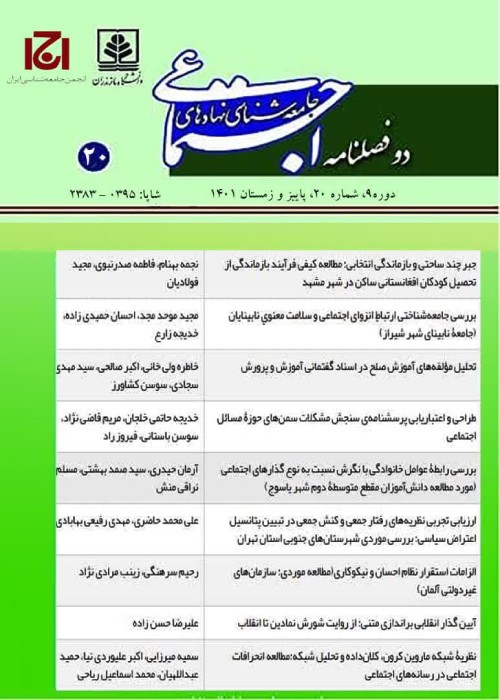Provisions and Processes of Forming a Media Literacy Model for High School Students: A Grounded Theory Method among Teachers
The present study investigates the contexts and processes of media literacy model formation for high school students.
This research employed the qualitative method of grounded theory. The sampling method was theoretical and purposeful through which 21 teachers and education activists were selected for in-depth interviews. The theoretical sampling process continued until the data reached saturation. The collected data were transcribed and analyzed using open, axial and selective coding. Line by line analysis was used at the open coding stage, followed by concepts development and abstract representation at the axial and selective coding stages.
Based on the findings, the construct of “education-oriented media literacy” was selected as the final core category, and based on the paradigm model, "taste of reality" was considered as a concept that students would understand after gaining the media knowledge. The taste of reality reveals itself to the students as the consequence of the whole process of learning media literacy. This result is achieved by applying the media knowledge to understand the facts underlying the media data. The taste of reality is mainly constructed as the result of factors such as employing qualified teachers, teaching media literacy in schools, forming participation-oriented classes in the new geometric space, and updating the content of the media literacy courses as well as a set of contextual intervening factors. In addition to creating tastes of reality, the education system helps the students understand the existing reality more easily by employing strategies, such as the use of up-to-date methods in teaching the media literacy, directing the lives of the student networks, and controlling and monitoring the discourse over the media. The outcome of applying the above strategies for the media literacy education system and understanding the reality will be the formation of a critical thinking and a critical view among the students towards the media and various information in them.
Media literacy is the result of the interaction between thr higher management and policy levels, middle executive levels and lower individual levels. These three levels interact with each other continuously in a system to shape the education-oriented media literacy. The end result of interaction within the system is the construction of education-oriented media literacy, and the overall outcome and feedback, which indicates the proper and positive functioning of the system, delicately reveals its taste of social reality to the students.
- حق عضویت دریافتی صرف حمایت از نشریات عضو و نگهداری، تکمیل و توسعه مگیران میشود.
- پرداخت حق اشتراک و دانلود مقالات اجازه بازنشر آن در سایر رسانههای چاپی و دیجیتال را به کاربر نمیدهد.


